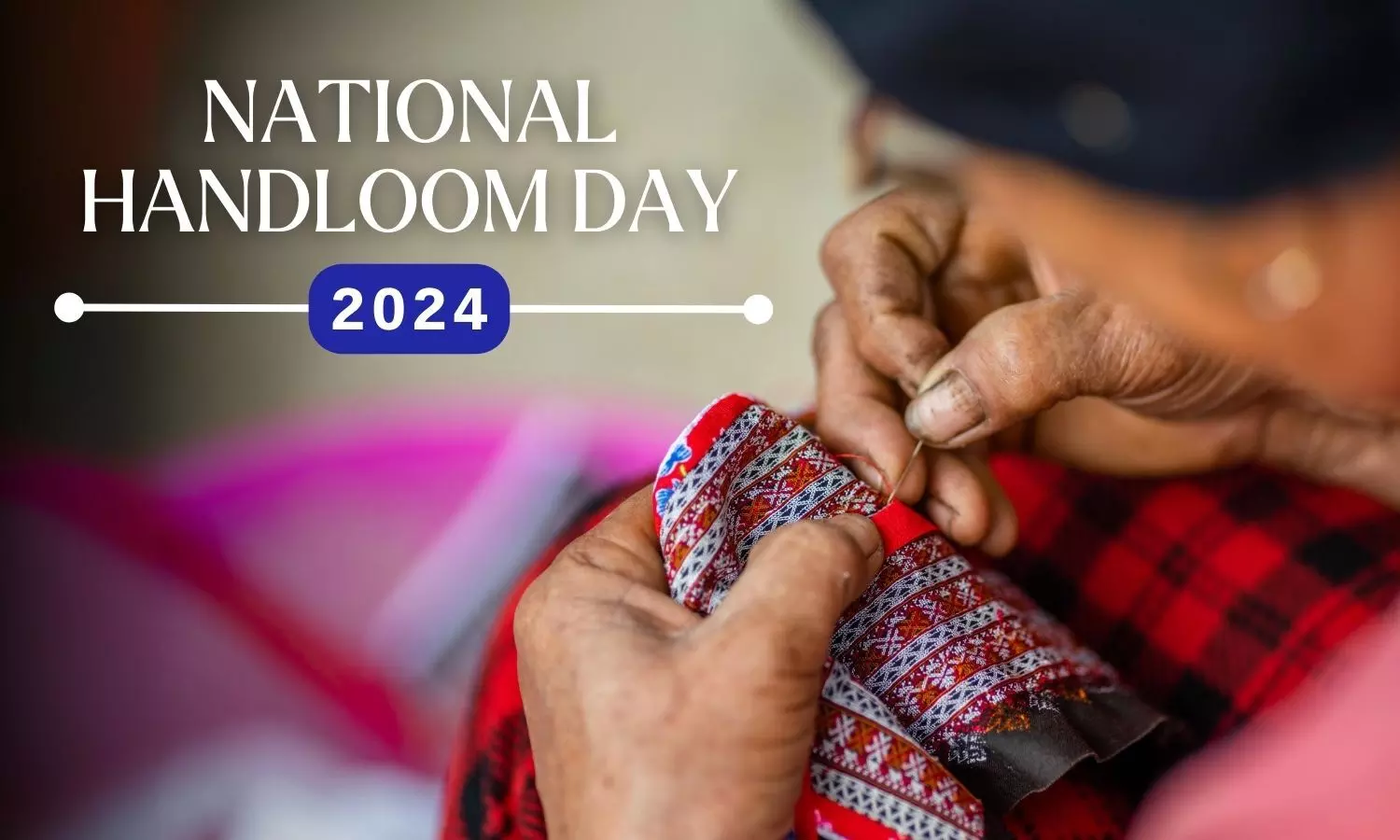National Handloom Day 2024 - Celebrating India's Textile Heritage
Learn about the significance of National Handloom Day, its historical roots, and the current state of the handloom industry in India.
National Handloom Day 2024 - Celebrating India's Textile Heritage

National Handloom Day is a significant event observed annually on August 7th, commemorating the rich tradition and cultural importance of handloom weaving in India. Initiated in 2015, this day honors the Swadeshi Movement, which began on August 7, 1905. This movement, a crucial moment in India's fight for independence, aimed to promote indigenous industries and support local artisans, particularly handloom weavers.
History of National Handloom Day
The inaugural National Handloom Day in 2015 was not just a celebration but a tribute to the Swadeshi Movement's legacy. This movement was instrumental in encouraging the use of locally produced goods over imported items. By focusing on handloom products, it aimed to rejuvenate traditional Indian textiles and empower local weavers, thereby fostering national pride and economic self-sufficiency. The National Handloom Day, therefore, serves as a reminder of this historic struggle and a platform to celebrate the enduring art of handloom weaving.
Significance of National Handloom Day
The significance of National Handloom Day extends beyond mere celebration. It highlights the critical role of handlooms in preserving India's cultural heritage and supporting rural livelihoods. Handloom weaving is more than just a craft; it is a vital part of India’s socio-economic fabric. By recognising this day, the government and the public reaffirm their commitment to sustaining and revitalising the handloom industry, which plays a crucial role in India's rural economy.
Handloom Industry in India
The handloom industry in India is a cornerstone of the country's textile sector. It represents a unique blend of tradition and craftsmanship, contributing significantly to the economy. The Indian handloom sector is characterised by its diversity, with different regions specialising in distinct weaving techniques and designs. This diversity not only adds to the cultural richness but also ensures a wide variety of handloom products that cater to global tastes.
Traditional Indian textiles are renowned for their intricate patterns and high-quality materials. From the vibrant Kanjivarams of Tamil Nadu to the delicate muslins of Bengal, the handloom industry produces textiles that are deeply embedded in India’s cultural heritage. Each piece tells a story of craftsmanship, tradition, and regional identity.
Government Interventions and Support
In recognition of the importance of the handloom sector, the Government of India has implemented various measures to support handloom weavers and enhance the industry’s growth. Initiatives such as block-level clusters, skill upgradation programs, and yarn subsidies are designed to address the challenges faced by handloom weavers. These measures aim to improve the quality and productivity of handloom products while ensuring better market access and financial support for artisans.
The launch of the "भारतीय वस्त्र एवं शिल्प कोष" e-Portal by Prime Minister Narendra Modi on National Handloom Day 2024 exemplifies these efforts. Developed by the National Institute of Fashion Technology, this portal serves as a comprehensive repository of information about textiles and crafts. It provides a platform to promote and support artisans across the country, preserving the rich heritage of Indian handloom textiles.
Challenges Facing the Handloom Sector
Despite its significance, the handloom industry faces numerous challenges that threaten its sustainability. Handloom weavers often struggle with issues such as inadequate working capital, limited access to credit, and competition from power looms and mills. These challenges are compounded by quality inconsistencies and a lack of technological advancements.
Additionally, there is a need for greater awareness about the uniqueness of handloom products. Marketing issues and a lack of effective promotional campaigns have made it difficult for handloom products to compete in the global market. Overcoming these challenges necessitates a united approach from the private and government sector, focusing on technological investment, innovation, and enhancing the overall infrastructure of the handloom industry.
Promoting Handloom Products
Promoting handloom products through exhibitions and e-commerce platforms is crucial for revitalising the sector. Handloom exhibitions play a significant role in showcasing the diversity and quality of handloom textiles to a broader audience. These events not only attract buyers but also create awareness about the value of traditional textiles.
By leveraging digital technology and enhancing market intelligence, we can create new opportunities for handloom weavers to reach global markets. The growth of online platforms and social media provides a unique chance to promote traditional Indian textiles and connect with consumers worldwide.
National Handloom Day is a vital occasion to celebrate and support the handloom industry in India. By honoring the legacy of the Swadeshi Movement and recognising the contributions of handloom weavers, we ensure that this traditional craft continues to thrive. The government’s efforts, combined with public support, are essential for preserving India’s textile heritage and promoting sustainable development in the handloom sector. As we celebrate this day, let us commit to supporting and showcasing the exquisite craftsmanship of Indian handloom products, ensuring that they remain a vibrant part of our cultural and economic landscape for generations to come.

